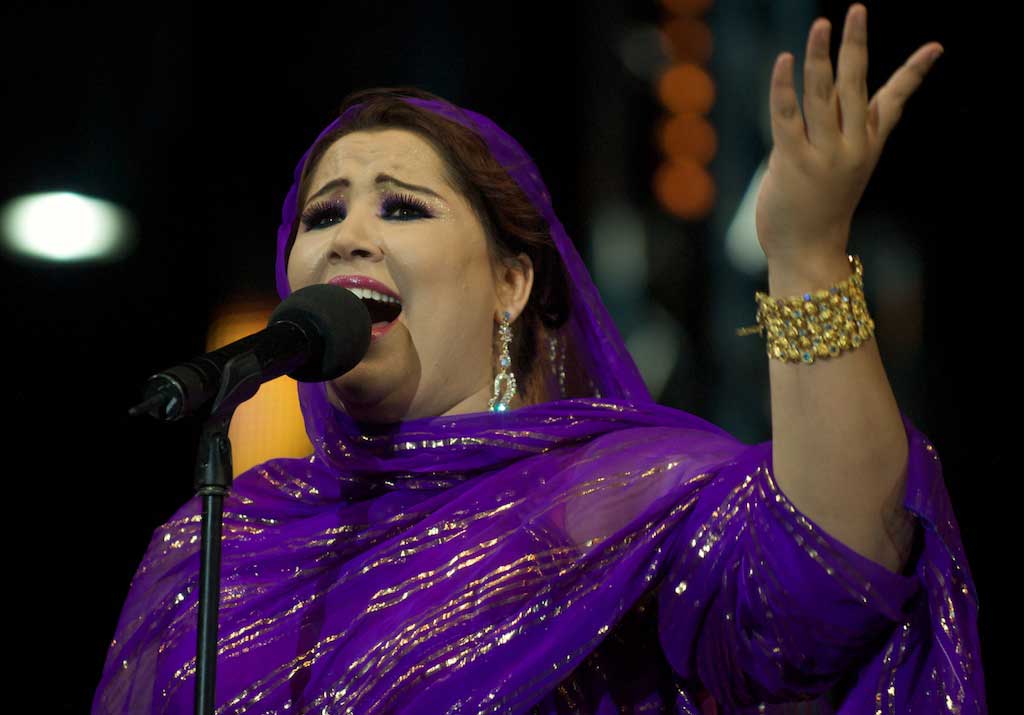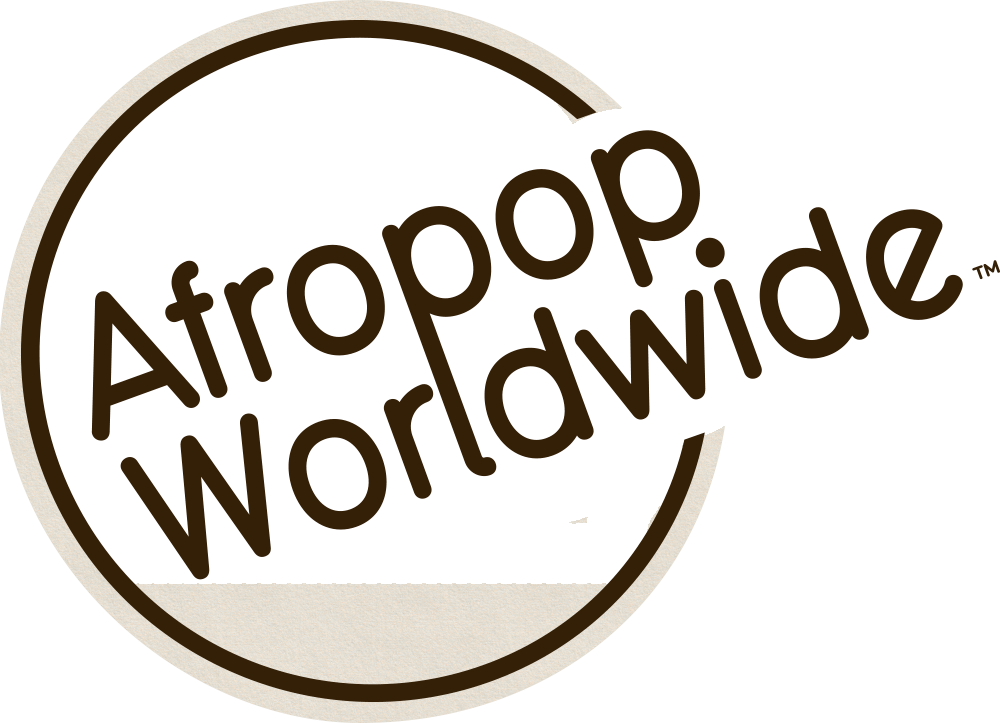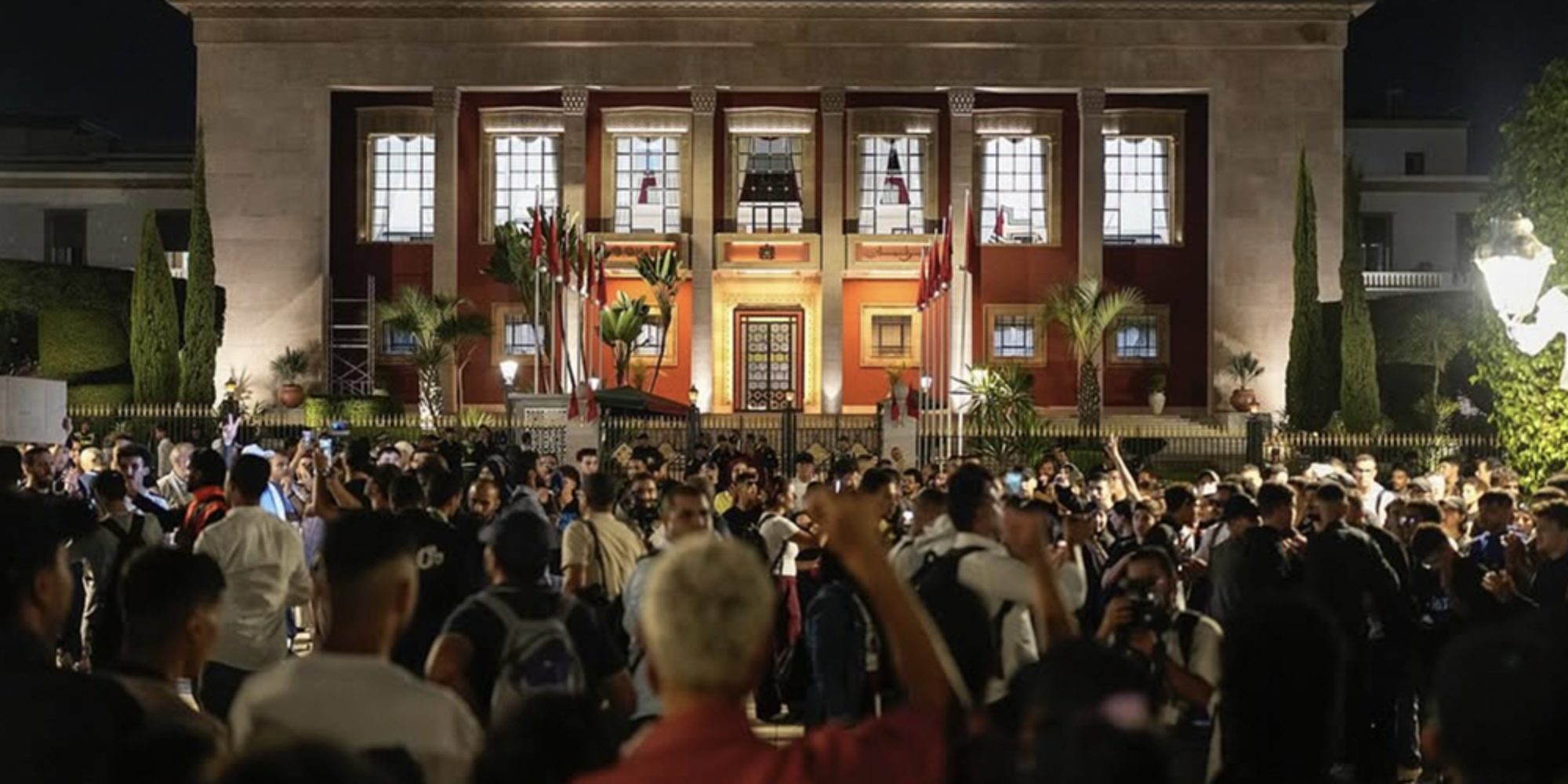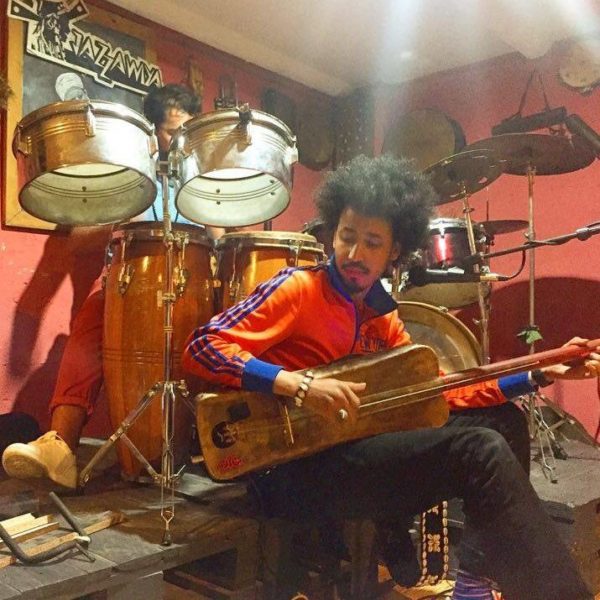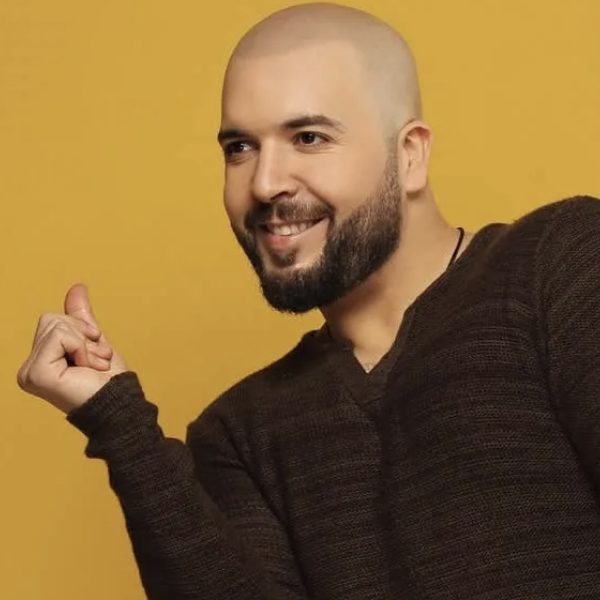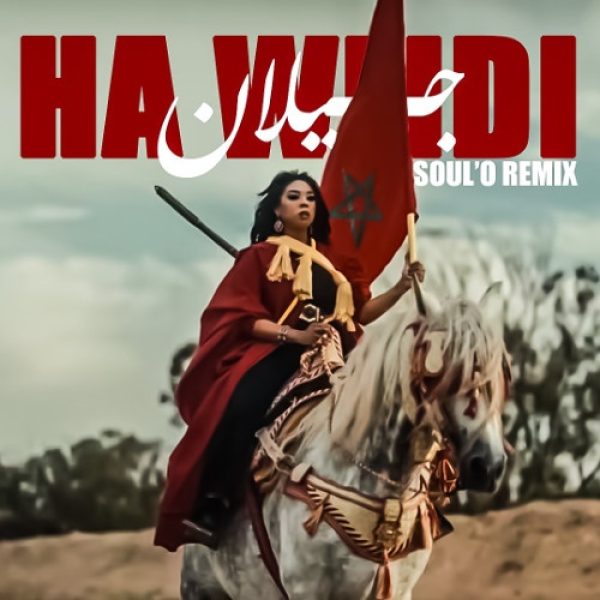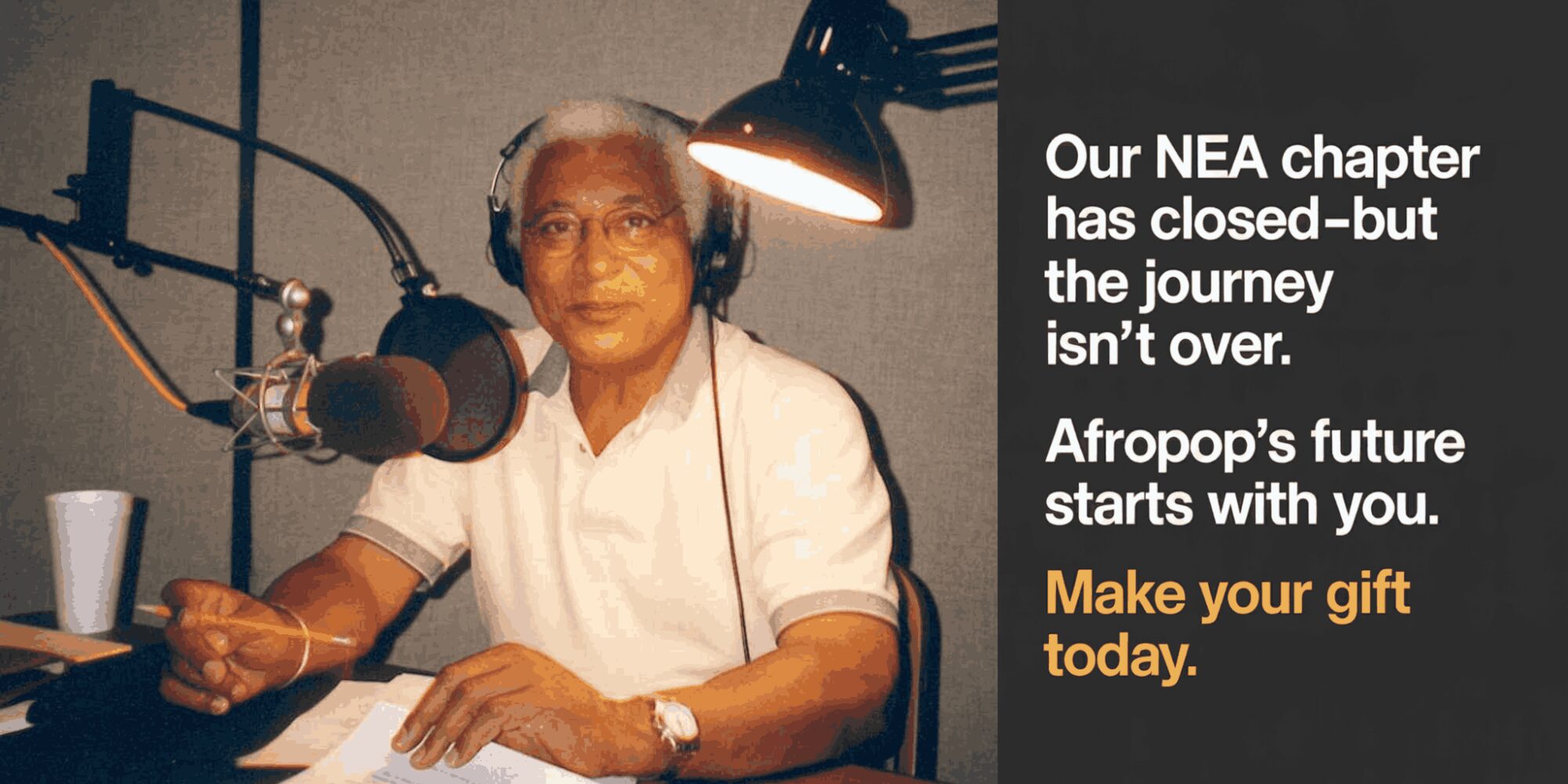Photos by Mosa'ab Elshamy.
On the weekend of September 27, 2025, Moroccan young people took to the streets demanding health and education. Police responded with disproportionate force, leading to a week of nightly escalations that culminated in riots across the country and the deaths of three protestors in the southern town of Leqliaa. Organized on Dischord, Instagram, and Facebook by a leaderless internet group known as Gen Z 212, the protests have been typically 21st century in their decentralized, anonymous and highly online nature.
More surprising is the prominent role rap artists took on in articulating the demands of protestors. Morocco has a long history of socially conscious rap music voicing the concerns of the country's urban poor, and in recent years artists like Stormy, Draganov, and ElGrandeToto have ranked amongst the most successful Arabic-language musicians in the world. In the absence of clear leaders for the September protests, these singers became unofficial spokesmen for the movement.
Anyone paying attention to Moroccan popular music in the last decade could tell that young people are fed up. The country’s working class neighborhoods have become hotbeds for exciting hip-hop, mixing American trends with North African rhythms and genres. From the razor-sharp rhymes of L’Morphine to the bleary auto-tuned melodies of Kira7, Moroccan rap is made stylistically coherent by dark, moody beats and a relentless lyrical fixation on poverty, unemployment, and the double-edged threat/promise of migration.
Primarily but not exclusively catering to the country’s young men, Moroccan rappers fluidly blend Arabic, French, English, Spanish and Tamazight in ways that highlight their attachment to home as well as their aspirations abroad. Casablanca rapper Dizzy Dros exemplifies these trends in his 2023 hit “M3a L3echrane” (“With the Homies”), when he raps “Only seeking God and my parents’ approval cause probably won’t get it from the Palace/ Will the grave welcome us?/ Will the sea accept us?/ Our Morocco is the best country but you made it hell for us.”
On the occasion of International Youth Day, just weeks before the protests began, the rapper Hamza Raid released “Chabab” (“Youth”) whose chorus asks “Youth day with no youth [...] where are our riches, where is our wealth? Is it not a phantom?” before rhyming Abracadabra with “Karama, Adela, Houria” a common protest slogan in the region demanding “Dignity, Justice, Freedom.” These values motivated the Gen Z protestors, who denounced their government’s lavish spending on World Cup stadiums and tourism projects at the expense of crumbling schools and hospitals. The nationwide movement emerged from a local demonstration outside the regional hospital in Agadir, where eight pregnant women died in the month of August alone. Raid was arrested on the first weekend of protests in September, becoming a cause célèbre amongst Moroccan youth who took up the hashtag #FreeKoulchi (“Free Everyone”).
What started as relatively small and peaceful demonstrations on September 27 were exacerbated by a swift and brutal response from the state. As videos circulated online of arbitrary arrests and graphic police violence, popular rappers began to weigh in publicly. There was a groundswell of support for the protestors, and a palpable sense of outrage at how authorities were attempting to quash widely-held grievances. Everyone from Don Bigg, the old-school grandfather of Moroccan rap who notoriously disavowed the 2011 Arab Spring protests, to Khtek, an upstart young female rapper in a field dominated by men, took to Instagram to declare their support for the demonstrators.
Without obvious leaders of the protest movement, and in the absence of a robust and free local press, rappers became the mouthpiece for the demonstrators. In the face of mass arrests, these stances involved no small degree of professional and financial risk. On September 28, Bigg wrote to his followers, “we have a failing education system that leads us to send our kids to Europeans (if you have the money), and a failing health system that makes us shed our blood to get treatment in a clinic (if you have the money) [...] It’s time to be Moroccans Until Death [the title of his most widely-celebrated album], and work on our country together. I prefer to see Gen Z going out in demonstrations as is their right, than to see them planning a bank break-in.” ElGrandeToto, the megastar of the moment, cancelled a concert in Casablanca scheduled for October 11 in solidarity with the youth movement and announced a boycott of future shows “as long as the problems of the country have not been solved.”
Of the many protest songs written in the weeks since the protests started, perhaps the most searing is Dada’s “MGHRIBI KA33I” (“Pissed Off Moroccan”). The Agadiri rapper had been decrying his city’s failing hospital system since as early as 2023. The track begins with moody piano chords and recorded audio of a protester arguing with a policeman “Am I not a muslim? Am I not a citizen? Why are you arresting me?” before launching into Dada’s blistering verse. “With my own eyes, I see what they say to you is just lies/ My soul is like ice, I see it melting” he raps in the chorus. “I’m no longer confused, the system is Ding Dang Dong” he repeats in the outro, as the beat resolves into the familiar tune of “Frère Jacques.” The song is an urgent wake-up call, directed against a rickety system trying to lull its audience to sleep.
Moroccan rappers spoke with poise and sincerity, using the legitimacy earned through years of street rapping to deliver nuanced critiques of the state. On October 6, after massive pro Gaza demonstrations in the capital, Rabat rapper Vargas asked, “Why do you let us speak about Palestine but not about our demands, which are in the interest of our country?” SmallX, a member of the high-octane street rap duo Shayfeen, noted in a simple and intimate reel posted October 2 that the protestors’ demands were “normal, there’s no harm in them.”
He eloquently sought to explain why some of the protests had turned to rioting and looting, stating that “there’s another type of protestor, who are also oulad chaab (‘men of the people’) who are also Moroccans, who see the country developing forward as if they have been forgotten [...] Those who set fires yesterday, they don’t have the right, but we can’t come and judge them. You [in power] are the ones who did not train people not to burn. You created a type of person who, in that moment when he stages a riot, he is expressing himself: I exist, look at me, here I am [...] That ould al houma(‘guy next door’) who went out and burned something, go see where he grew up, no one took care of him, no one listened to him. When he was spoken to, it was simply to hit him and tell him to shut up. How do you expect him to turn out? [...] In my opinion, it is better to remain peaceful, to remain civilized. I am in solidarity with all who were beaten and abused during these protests. I am also in solidarity with those cops who got hurt. We are all in one house, we all want our Morocco to be better.”
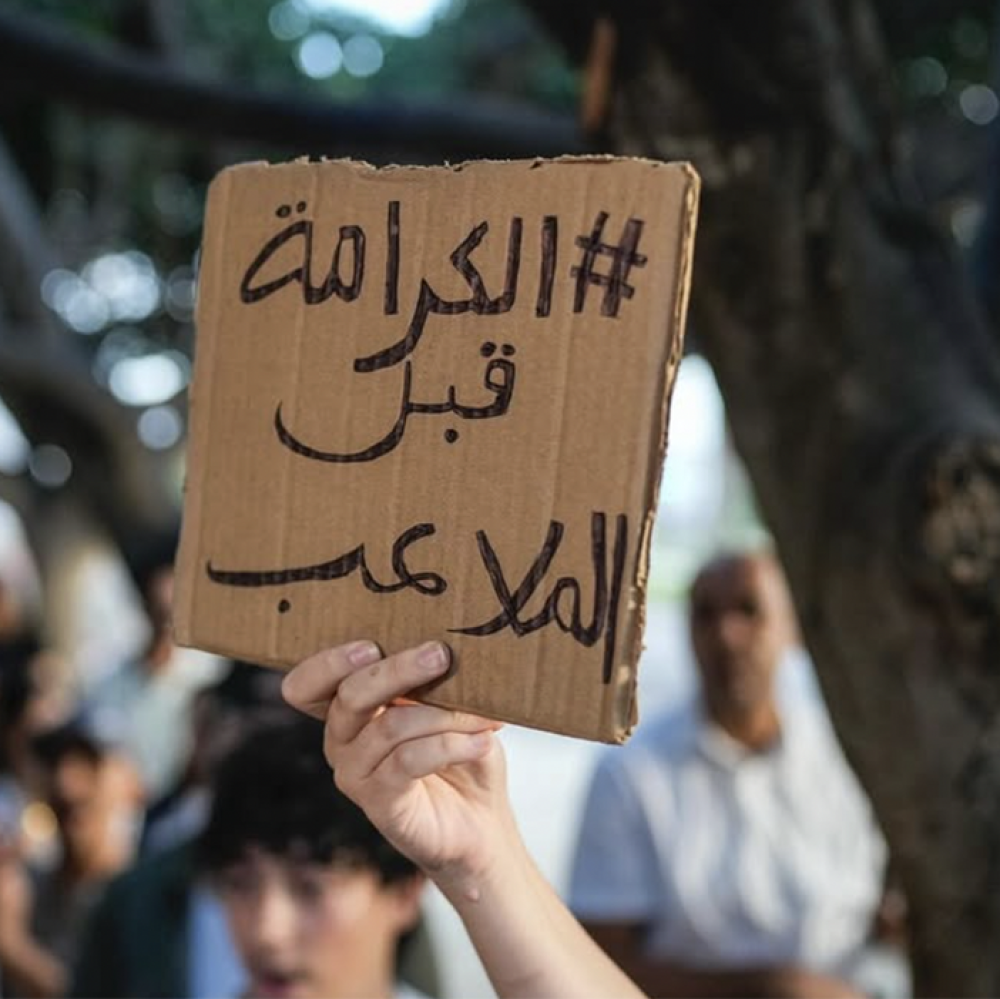
Yet not all artists were quite as sympathetic. As protests took a violent turn, with young men burning cars, banks and government offices in cities like Salé and Inezgane on the night of October 1, tensions and unease heightened. Exploiting this fear, a narrative took shape that blamed protestors for the violence. Bigg reposted images of looting, captioned: “This is what we don’t want. Riots like these will kill the project of demands which were in peaceful demonstrations.” Casablanca rapper 7liwa deployed racialized language when he wrote, “Gen Z, those nice ones who went out in the beginning, now they’ve become Red Indians! They are like [prime minister] Akhenouch. They also don’t listen to anything.”
This framing of protestors as violent and dangerous has worked, in so much as it took the wind out of a rising protest movement. After the fires and vandalism of October 1, Gen Z organizers announced a “strategic pause” until later in the month, while the government plans a series of reforms to appease popular anger. It remains to be seen whether the Gen Z protests will develop into a genuine popular movement, or if they will falter in the face of the Moroccan state’s well-known pattern of appeasement and cooptation.
Yet the viral spread of this debate online signals the extent to which rap music has supplanted traditional media and political parties in mobilizing young people and voicing Moroccan nationalism in the 21st century. The leading signatories of an open letter to the king, dated October 8 and calling for constitutional reform, included not just activists, journalists and university professors but also Khtek, Raid, Dizzy Dros and the chaabi singer Cheb. Writing on X, Dizzy mockingly announced, “Honestly, we were doing wrong by these ministers, we also want them to come out and speak with us. What we have witnessed this week explains why they haven’t done interviews: No charisma, no oratorical feel, no leadership spirit, no eloquence, no power nor strength save with God.” In the war of words, Moroccan rappers hold all the cards.
Want to hear Moroccan protest rap? Check out this excellent coverage from DimaTop Magazine, this mix from Radio Flouka, and this cypher from BR Productions.
Related Audio Programs
